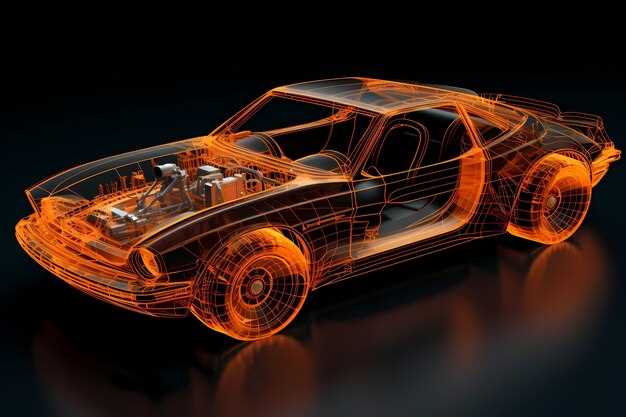Adopt a structured approach to testing supercars before they hit the market. Begin with a series of rigorous performance evaluations, focusing on speed, handling, and braking capabilities. These preliminary tests should take place on closed tracks, allowing engineers to collect data without outside interference.
Next, prioritize durability assessments. Subject the vehicle to extreme conditions, such as high temperatures, heavy rain, and sharp turns. These tests assess not only the car’s mechanical integrity but also the reliability of electronic systems and components. Every detail matters; even minor issues can hinder performance.
Incorporate a comprehensive safety evaluation into the process. Utilize crash test simulations to ensure the car meets industry safety standards. Focus on both driver and passenger protection, taking into account various impact scenarios. The outcome will shape future designs and modifications.
Lastly, gather feedback from professional test drivers who can provide insights from behind the wheel. Their real-world experience aids in refining the driving experience, enhancing comfort and usability. Engage with enthusiasts during track days to gauge public reaction and address any concerns before mass production.
Crash Testing Protocols for Supercar Safety Standards
Implement rigid crash testing protocols to ensure supercars meet safety benchmarks. Focus on various impact scenarios like frontal, side, and rear collisions. Use advanced dummies equipped with sensors to collect data on forces sustained by occupants during tests.
Conduct frontal impact tests at speeds of 40 km/h, mimicking real-world collisions. Evaluate outcomes using crumple zones that absorb energy, minimizing the transfer to passengers. Implement side impact tests, assessing both stationary and moving vehicles to understand how different angles affect safety.
Integrate rollover tests to simulate real-life scenarios. Employ the SAE J211 standard for measuring the forces experienced by dummies during these events. Additionally, use a multi-angle approach to evaluate the supercar’s stability during sudden maneuvers.
Utilize crash test data to refine vehicle design. Collaborate with safety experts to analyze results and implement improvements. Ensure the supercar adheres to governmental standards such as Euro NCAP or NHTSA while striving to surpass these metrics.
Perform post-crash evaluations on structural integrity and the performance of safety systems, including airbags and seatbelts. Ensure advanced materials contribute to both lightweight design and increased safety. Regularly update testing protocols based on the latest research and technological advancements.
Encourage transparent reporting of test results to build consumer trust. Incorporate feedback from real-world situations to adapt testing methods, ensuring that safety remains a priority throughout the vehicle’s lifecycle.
Performance Benchmarking: Achieving Optimal Speed and Handling
Begin with precise measurements of acceleration and braking distances. Utilize GPS-based data logging systems to capture real-time speed metrics and performance analytics. Aim for a 0-60 mph time under three seconds for supercars, while maintaining a stopping distance of under 100 feet from 60 mph.
Focus on suspension tuning to achieve responsive handling. Incorporate adaptive dampers that allow for on-the-fly adjustments. Strive for a balance between ride comfort and track performance; this can be measured through lap times on both asphalt and uneven surfaces.
Test tire performance rigorously. Select high-performance tires and evaluate their grip levels under various conditions, including dry and wet tracks. Use a standardized skid pad for lateral G-force tests, targeting at least 1.0g for optimal cornering capabilities.
Evaluate aerodynamics thoroughly by utilizing wind tunnels to refine body shapes. Monitor downforce levels, aiming for a 3:1 lift-to-drag ratio. Conduct tests at varying speeds to assess stability and control at high velocities, ensuring minimal lift and maximum grip.
Leverage telemetry systems to gather data during test drives. Analyze throttle response and steering inputs for synchronization. Use this information to fine-tune the electronic stability control system and traction control settings for enhanced driver engagement.
Conduct real-world testing on racetracks and closed courses to simulate dynamic driving scenarios. Monitor driver feedback for subjective evaluations of handling and comfort. Adjust suspension settings, weight distribution, and power delivery based on this feedback to align with performance goals.
Incorporate real-time analytics into your performance benchmarking strategy. Regularly assess data to track improvements and identify areas for enhancement in both speed and handling. Build a feedback loop that continuously informs design and engineering choices, ensuring that every iteration brings you closer to ideal performance metrics.
Durability Assessments: Ensuring Longevity Under Extreme Conditions
Conduct rigorous testing in extreme temperatures, both hot and cold. Use environmental chambers to simulate these conditions, ensuring that components remain functional at temperatures ranging from -40°C to 50°C.
Implement vibration testing to assess the impact of uneven surfaces and road conditions. Use multi-axis vibration tables to replicate the stresses faced during high-speed driving.
Conduct corrosion tests to evaluate the car’s resistance to environmental factors. Spray saltwater solutions to mimic coastal climates and monitor for material degradation over time.
Utilize fatigue testing to explore how components withstand repeated stress. Cycle critical parts, such as suspension systems, to identify potential failures after prolonged use.
- Test the chassis for stress fractures under load conditions.
- Analyze engine performance after extended periods operating at high RPMs.
- Assess tire wear by simulating wear patterns from aggressive driving.
Investigate material durability by employing accelerated aging tests. Subject components to UV light and humidity to determine how materials withstand aging effects over time.
Engage in rigorous track testing with a focus on endurance. Schedule lengthy sessions to push the supercar through various driving scenarios, tracking any signs of wear or performance dips.
Monitor systems in real-time using telemetry tools. Collect data on temperature, pressure, and wear, allowing for immediate analysis and adjustments.
Involve third-party testing agencies for an objective evaluation of durability assessments. Their insights can offer a fresh perspective on potential weaknesses.
Document all findings meticulously. Create a comprehensive database of test results to inform design decisions and enhance future models.
Ensure feedback loops are established with design teams. Regularly review testing outcomes and adjust designs to improve longevity and reliability.
Cooling Systems Evaluation: Managing Engine Temperature During Tests
Monitor engine temperature closely during testing to ensure optimal performance. Implement real-time data logging systems to track temperature fluctuations under various conditions.
Utilize advanced cooling techniques to maintain engine integrity:
- Liquid Cooling Systems: Use a combination of coolant types to enhance thermal conductivity. Consider additives that improve heat transfer.
- Air Coolers: Integrate high-performance radiators and intercoolers to maximize heat dissipation from the engine.
- Heat Exchangers: Employ efficient heat exchangers in the oiling system to manage both oil and coolant temperatures effectively.
Conduct specific tests to evaluate the cooling system’s reliability:
- Static Tests: Assess the cooling system’s performance at idle and during low-speed scenarios to check baseline efficiency.
- Dynamic Tests: Execute high-speed runs and aggressive acceleration maneuvers to see how well the cooling system responds under stress.
- Ambient Condition Tests: Run tests in varying environmental temperatures to evaluate cooling efficiency in diverse conditions.
Evaluate the results after each test session. Look for any signs of overheating, such as decreased power output or warning indicators.
Consider redesigning components if temperatures exceed acceptable levels. Focus on improving airflow, enhancing insulation, and optimizing the placement of cooling components to reduce heat buildup effectively.
Collaborate with thermal engineers to develop simulations that predict how various designs respond to heat loads. Test those simulations against real-world data to refine the cooling strategies continually.
Regularly update maintenance procedures to include thorough inspections of the cooling system before and after each test. This approach guarantees components remain in peak condition and reinforces reliability in production models.
Electronics and Software Reliability Testing: Preventing Failures
Integrate robust simulation tools throughout the development phase to assess the software’s performance under various conditions. Use dynamic testing environments that mimic potential real-world challenges to identify vulnerabilities early.
Conduct Hardware-in-the-Loop (HIL) testing to evaluate the interaction between electronic components and software. This method ensures that all elements function harmoniously before production.
Implement stress testing to push the software to its limits. Subject the system to extreme temperatures, vibrations, and power fluctuations. This helps uncover weaknesses that may arise during operation.
Establish a rigorous validation process for all code modifications. Utilize static code analysis to detect potential errors and enforce coding standards, reducing the risk of software failures.
Engage in regular audits and reviews of the electronic architecture. Track component aging and performance degradation over time to predict and prevent failures. Utilize predictive analytics tools to anticipate issues before they manifest.
Ensure thorough integration testing after every major software update. Testing in a controlled environment guarantees all components and systems communicate effectively, minimizing the risk of malfunctions.
Utilize the table below to track critical testing areas and findings:
| Testing Type | Purpose | Frequency | Key Metrics |
|---|---|---|---|
| Simulation Testing | Assess software performance in various scenarios | Ongoing | Error rate, performance metrics |
| HIL Testing | Evaluate system interactions | Post-design completion | Response time, system stability |
| Stress Testing | Identify weaknesses under extreme conditions | Before production | Failure rate, performance under stress |
| Static Code Analysis | Detect coding errors and enforce standards | Ongoing | Code quality metrics |
| Integration Testing | Guarantee effective component communication | After updates | Integration success rate |
Regularly reviewing and improving testing methodologies leads to enhanced reliability of electronics and software. Maintain clear documentation to track test results and trends, allowing for continuous improvement and effective troubleshooting in the production stage.
Real-World Driving Simulations: Mimicking Daily Use Scenarios
Conduct rigorous driving simulations that replicate everyday situations encountered by drivers. Focus on city traffic, highway cruising, and mixed-condition environments to test performance limits. Prioritize scenarios like sudden stops, acceleration from standstill, and sharp turns. Ensure simulations include varying weather conditions to evaluate the supercar’s handling in rain, snow, and extreme heat.
Utilize advanced driving simulators equipped with real-time data analytics. These tools allow engineers to gather feedback on vehicle dynamics, braking efficiency, and traction control. Incorporate interaction with common obstacles such as potholes and road debris to assess the responsiveness of the suspension system and chassis stability.
Implement driver ergonomics in simulations, ensuring that features like seat comfort, visibility, and control layout are tested under a range of conditions. Collect feedback from test drivers to understand user experience aspects, such as usability and accessibility of controls during various driving maneuvers.
Include long-distance travel simulations to measure fuel efficiency and overall comfort over extended periods. Analyze engine performance when cruising at high speeds and in stop-and-go traffic. Validate infotainment systems for reliability, considering how distractions might affect driving.
Simulations should also allow for compliance checks, ensuring that vehicles meet safety regulations and environmental standards. Test various driver assistance features, such as adaptive cruise control and lane-keeping aids, to confirm their reliability in daily driving scenarios.
Regularly review simulation outcomes to identify any weaknesses in design or performance. Use this data to iterate and refine vehicle systems prior to production, ensuring that each supercar meets the high expectations of future owners.






